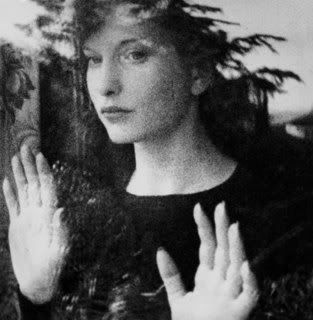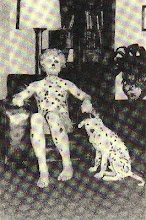
"With the advent of 16mm equipment came the birth of film as personal artistic expression, and Maya Deren led the revolution. During the 1940s and 50s the woman who was "her own avant-garde movement," created some of the most hypnotic and beautiful experimental films ever made.
The epitome of Greenwich Village art house sensibility, Deren's film meditations featured such icons as Marcel Duchamp, Anais Nin, and John Cage in cameo appearances. Yet Deren realized that art film could be more than the citation of other art mediums or the manipulation of dancing shapes across the screen. She used her camera to explore questions of aesthetics from a place of inner, subjective reality. Deren’s first film, "Meshes in the Afternoon," signaled nothing less that the birth of American avant-garde filmmaking. Her movies are haunting, lyrical, and breathtaking fusions of human and cinematic movement, where the actors dance with the camera. Though called a heretic by those who worked with her, she was the first person to receive a Guggenheim grant for filmmaking and the first woman to receive the Grand Prix Internationale in avant-garde film at the Cannes Film Festival." - Art and Culture.
"Maya Deren's first film, Meshes of the Afternoon (1943) is one of the most influential works in American experimental cinema. A non-narrative work, it has been identified as a key example of the "trance film," in which a protagonist appears in a dreamlike state, and where the camera conveys his or her subjective focus. The central figure in Meshes of the Afternoon, played by Deren, is attuned to her unconscious mind and caught in a web of dream events that spill over into reality. Symbolic objects, such as a key and a knife, recur throughout the film; events are open-ended and interrupted. Deren explained that she wanted "to put on film the feeling which a human being experiences about an incident, rather than to record the incident accurately."
MESHES OF THE AFTERNOON (Part 1)
MESHES OF THE AFTERNOON (Part 2)
Made by Deren with her husband, cinematographer Alexander Hammid, Meshes of the Afternoon established the independent avant-garde movement in film in the United States, which is known as the New American Cinema. It directly inspired early works by Kenneth Anger, Stan Brakhage, and other major experimental filmmakers. Beautifully shot by Hammid, a leading documentary filmmaker and cameraman in Europe before he moved to New York, the film makes new and startling use of such standard cinematic devices as montage editing and matte shots. Through her extensive writings, lectures, and films, Deren became the preeminent voice of avant-garde cinema in the 1940s and the early 1950s." (MoMA.org)
To see more of her films go here:
http://www.ubu.com/film/deren.html




No comments:
Post a Comment